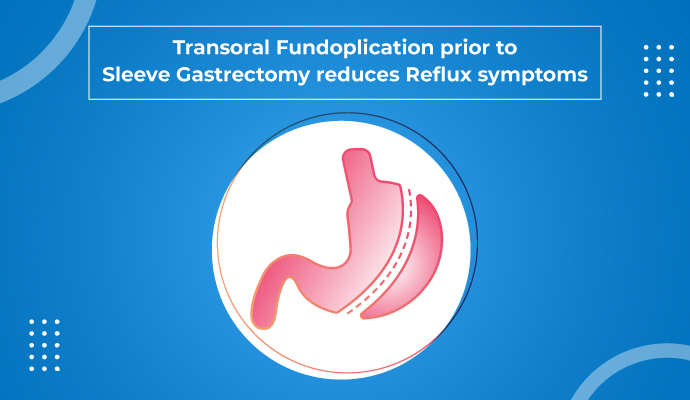
Sleep apnea and how it is associated with Obesity
Sleep apnea refers to a condition in which
59,006 total views, 129 views today
Home » Endoscopic Sleeve Gastroplasty is a Good Alternative to Laparoscopic Sleeve Gastrectomy
The findings from a recent study, published in the journal, Obesity Surgery, suggest that endoscopic sleeve gastroscopy (ESG) is an effective alternative to achieve short and mid-term weight loss when compared to laparoscopic sleeve gastrectomy (LSG).
Seven studies that included 6,775 patients, were analyzed over a period of 6, 12, and 24 months to see significant differences in parameters, favoring LSG over ESG. The study showed that incidence of adverse events such as new-onset gastroesophageal reflux disease (GERD)that developed after ESG were lower compared to LSG.
Thus, ESG is a novel endoscopic bariatric therapy that offers stomach-sparing ways of weight management which is safe and a good alternative to LSG.
Reference:
Beran, A., Matar, R., Jaruvongvanich, V. et al. Comparative Effectiveness and Safety Between Endoscopic Sleeve Gastroplasty and Laparoscopic Sleeve Gastrectomy: a Meta-analysis of 6775 Individuals with Obesity. OBES SURG 32, 3504–3512 (2022).
Source link:

Sleep apnea refers to a condition in which
59,006 total views, 129 views today

Since the beginning of 20th century, the overall
58,982 total views, 128 views today

New year is the time for new beginnings.
59,682 total views, 128 views today

Weight loss can be tricky business, as it
59,554 total views, 129 views today

According to a recent study, weight loss through
60,452 total views, 128 views today

According to a recent study, preoperative very low
60,453 total views, 128 views today

A recent study conducted on GERD (Gastroesophageal Reflux
60,458 total views, 129 views today

A recent study done to examine the long-term
59,336 total views, 125 views today

Overweight and obesity is a major health concern
29,605 total views, 93 views today

A recent study published in the Journal of
28,795 total views, 93 views today

The findings of a recent study, published in
29,436 total views, 93 views today

Dietary modifications, along with regular exercise, play an
11,947 total views, 29 views today
